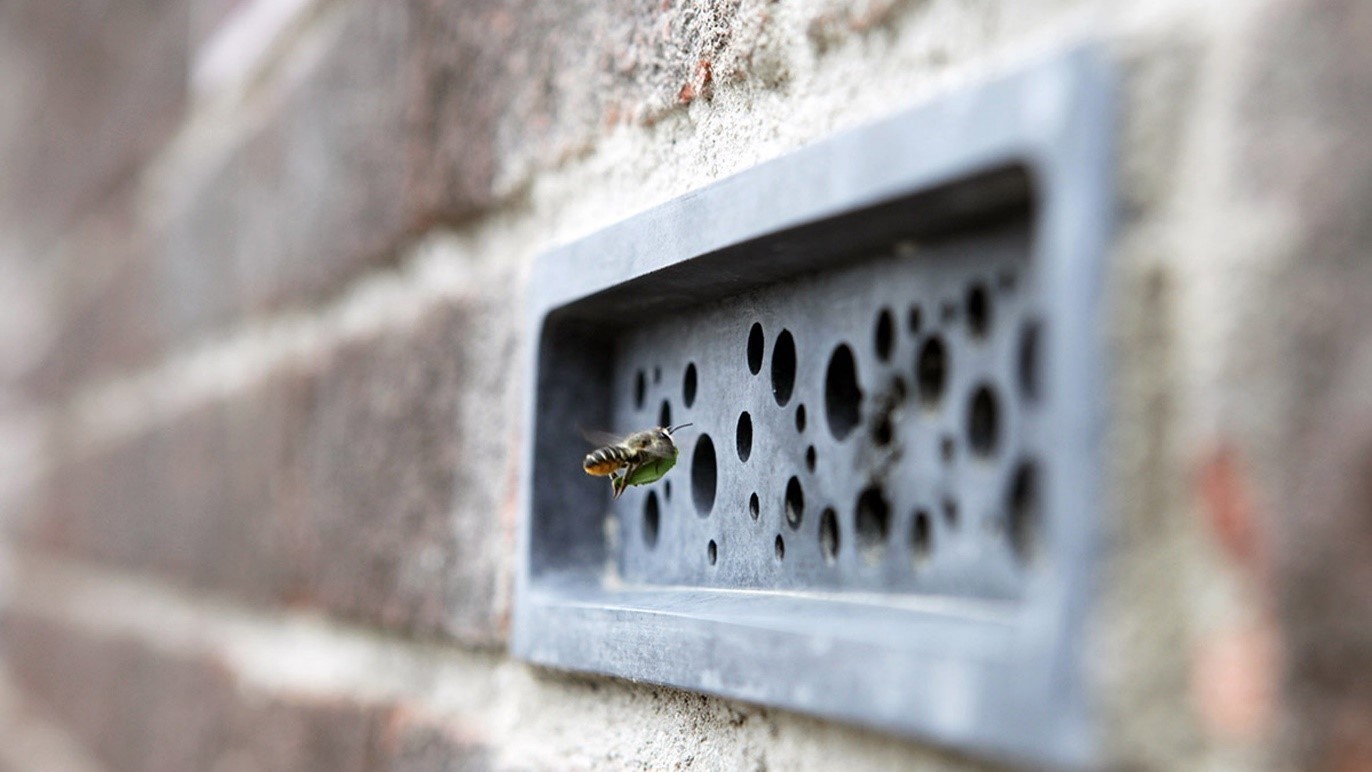News & Blog
Are Bee Bricks the new Buzz? Planning for biodiversity net gain.
Posted onJune 14, 2022
As a society we are increasingly aware of the threat that biodiversity loss poses to our environment and the earth as we know it. Sustainable development therefore sits high on the political agenda, making biodiversity improvement a key driver for developers, land owners and local planning authorities alike.
Biodiversity Net Gain (BNG) is an approach to development that aims to leave the natural environment in a measurably better state than it was beforehand. With sustainability at the forefront of political agenda, BNG has become prominent in placemaking strategy and sustainability policies are increasingly being incorporated into Local Plans, including both net zero and biodiversity strategies.
In 2021 the Environment Act was introduced, meaning every development proposal in the UK – no matter how big or small, and no matter what the current state of the plot is – will have to demonstrate a Biodiversity Net Gain (BNG) of 10%. This new condition to planning permission is anticipated to come into force in November 2023. Once applied, it means that completed developments will have a positive ecological impact, delivering improvements through habitat creation or enhancement and avoiding or mitigating any harm.
Biodiversity campaigns often focus on the dwindling global populations of bees, often caused by habitat loss, pollution and the use of pesticides. Bees are vital for the preservation of ecological balance and biodiversity in nature, as well as playing a major role in fertilisation of our crops. It is therefore no surprise that substantial efforts are being made to preserve bee populations.
One such example is the trend towards ‘living walls’, as demonstrated by New Bailey’s ‘Eden’ in Manchester, which is set to include Europe’s biggest green wall. This will provide the development with a significant Biodiversity Net Gain and is designed to be net zero carbon in operation, but with the concept still in relative infancy the long term effects are yet to be fully understood.
Another example comes in the form of Bee Bricks, which not only address biodiversity concerns but also promote biodiversity net gain. Bee bricks are the same size as regular bricks but integrate a series of narrow openings to provide nests for solitary bees for nesting. The Bricks are made using up to 75% recycled material from the Cornish China clay industry.
In April 2020 Brighton & Hove Council introduced a new policy stipulating that all new buildings above five meters should incorporate a Bee Brick into the external walls, designed to create a new habitat for solitary bees. The policy aims to address biodiversity concerns and promote biodiversity net gain by providing dedicated and protected habitats for bees within every new property in the region.
Whilst innovative solutions such as these are greatly welcomed, should they be mandated and what will be their effect on future development?
In areas with strong property values it is likely that policies such as these can be accommodated whilst maintaining developer profits, sufficient land values, and delivering on existing mandates for affordable housing, community provision and potential CIL charges. However, there exist large swathes of the country whereby house values are not sufficient to support viable development, never mind the added cost of BNG. Many of these areas are already the subject of regeneration initiatives, with bids being made across national and regional funding pots to unlock the private sector investment needed to spark any turnaround.
So whilst ‘levelling up’ remains a key pillar of national policy, it is essential that policy makers look past the ever-present calls for increased developer mandates and denigration of housebuilders. Instead, the focus must be on policies which work across the country, ensuring that levelling up does not become a hollow slogan, and that sufficient support is made available to see BNG enabled nationwide.

